Welcome back to The Kasturi/Files at Speculative Chic! It’s Day 7 of our horror movie month-long romp through our favorite eerie films. Today we conclude our tour of Scandinavia with the Norwegian film, Trollhunter! SPOILERS, spoilers, we got yer spoilers right here!
Gemma: How often do you see a horror movie related to Norse mythology?
Sandra: Well, if it’s us, all the friggin’ time, apparently!
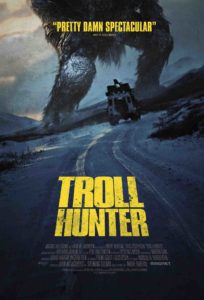 Gemma: Well . . . at least twice. Which is why we’re here today to discuss Trollhunter (2010, directed by André Øvredal), a Norwegian found-footage mockumentary in which a crew of film students shooting what they think is a documentary about poachers ends up stumbling across the grim, solitary work done by Hans (Otto Jespersen), a former soldier currently employed — under the table — by what he calls the Troll Security Service, a subsection of Norway’s Wildlife Board that (barely) pays Hans to track, cull and conceal the existence of trolls. “It’s a shit job,” Hans admits, which is why he proves surprisingly amenable to letting the kids tag along; essentially, he’s sick of risking life and limb in the service of people like bureaucrat Finn Haugen (Hans Morten Hansen), a humorless prick who follows Hans around harassing him about not cleaning up after himself well enough, even when trying to dispose of stupid, predatory, disgusting creatures that can range in size from 30 to 250 feet tall.
Gemma: Well . . . at least twice. Which is why we’re here today to discuss Trollhunter (2010, directed by André Øvredal), a Norwegian found-footage mockumentary in which a crew of film students shooting what they think is a documentary about poachers ends up stumbling across the grim, solitary work done by Hans (Otto Jespersen), a former soldier currently employed — under the table — by what he calls the Troll Security Service, a subsection of Norway’s Wildlife Board that (barely) pays Hans to track, cull and conceal the existence of trolls. “It’s a shit job,” Hans admits, which is why he proves surprisingly amenable to letting the kids tag along; essentially, he’s sick of risking life and limb in the service of people like bureaucrat Finn Haugen (Hans Morten Hansen), a humorless prick who follows Hans around harassing him about not cleaning up after himself well enough, even when trying to dispose of stupid, predatory, disgusting creatures that can range in size from 30 to 250 feet tall.
“In the fairy tales,” crew leader Thomas (Glenn Erland Tosterud) notes, “trolls eat at tables, wear clothes, talk . . . they’re just like people.” “But fairy tales are often far away from real life,” Hans replies, deadpan. “They’re less than bright. I once saw a troll try to eat its own tail . . . just head down between its legs, chewing away, until it fell over and rolled down the hill like a wheel.” As Thomas, his girlfriend/sound engineer Johanna (Johanna Morck) and cameraman Kalle (Tomas Alf Larsen) discover, trolls also piss everywhere, produce poison gas farts and carry rabies. Not to mention that in order to approach them at all you have to cover yourself in “troll stench,” i.e. “anything that can be squeezed out of a troll.” Just like in myths, trolls turn out to be enraged by anything to do with Christianity and are able to literally smell the blood of anyone who “believes in God and Jesus,” as not-so-stealth Christian Kalle soon find out (to his, and the crew’s, cost).
For Finn, the formula seems fairly simple: figure out where trolls appear to be ranging out of their “established territories,” send in Hans to shoot them with a gigantic ultraviolet flashbulb — since, as everybody in Scandinavia knows, sunlight turns trolls to stone — then blame the resulting carnage on bears (already dead, and often imported from Croatia). For Hans, however, it’s less about killing trolls than attempting to preserve their already shaky place in a changing ecosystem. (One can only wonder what sort of a frenzied troll stampede sequel Øvredal could make these days, with sections of the Arctic already on fire and a quarter of Antarctica falling into the sea.) As the veterinarian he works with notes, trolls may be gigantic, dumb and gross, but they’re worthy of at least the same respect accorded other animals — a quick death by culling when they get sick or exceed their boundaries, painless as she or Hans can make it, even if it involves either exploding or being turned into gravel afterwards.
Granted, found footage is an inherently clever way to “realistically” depict completely unreal things — especially huge ones, as the success of Matt Reeves’ camcorder-and-iPhone kaiju movie Cloverfield alone proves. But with Trollhunter, Øvredal manages to seamlessly blend what looks like a mixture of CGI and suit work to produce creatures with true heft, patterned after the long-nosed, wrinkly, culturally well-known designs of Norwegian artist Theodore Kittelsen. There’s a moment where Hans stakes out a bridge in the middle of the night, tempting a “Ringelfinch” troll with a string of bleating goats in apparent mimicry of “The Three Billy Goats Gruff.” As Thomas and Johanna argue about whether or not this constitutes animal cruelty, one of the goats gives a jerking bleat and simply seems to — disappear. Then Kalle turns on his night-vision, lighting up the darkness beneath the bridge to reveal the Ringelfinch’s huge, shambling form crouched there taking a bite out of the still living goat, before getting annoyed at the way its dinner is screaming and punching it down against the river’s rocky side, killing it instantly.
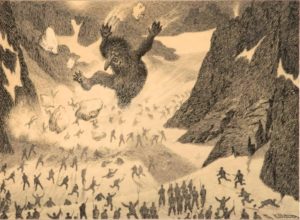
Kittelsen Troll
Sandra: You know, I have grown very tired of mockumentaries and found footage films, since everyone jumped on the Blair Witch bandwagon. And I liked Cloverfield, though I don’t find myself really wanting to revisit it. (On the other hand, I could watch What We Do in the Shadows all the damn day — but I’m digressing.) But I did adore Trollhunter and all that Norwegian dry humor. What the film accomplishes so well, though, is that it’s not just a tongue-in-cheek look at Norse mythology, but is genuinely scary and grotesque as the narrative progresses.
As you may have guessed, some of my favorite things in the world are revisited fairy tales and mythologies turned on their heads, and Trollhunter does this in spades. For some reason, trolls usually seem goofy, rather than scary (at least to me) — moments like the cave troll in Moria in The Fellowship of the Ring rely more on action, dramatic tension and speed, rather than genuine scares. Or the invasive troll at Hogwarts and all that troll snot. (Don’t get me started on those pink-haired troll dolls.) But the trolls in Trollhunter are gnarly-looking (literally and figuratively) and one suddenly looming out of the darkness really packs a punch. I also love that Kalle’s Christianity proves fatal, and not in a Mel-Gibson-religious-torture-porn-martyrdom way.
 Gemma: There’s an interesting tone to Trollhunter, one I’ve run across in a lot of “Scandi” media, here dictated by the literal back and forth between the film crew’s young, skeptical members and Hans himself. For Thomas and Johanna, the trip from “It’s sad if he actually believes in trolls” to “OH MY GOD, WE’VE FOUND OURSELVES THE BEST DOCUMENTARY PROJECT EVARRRRRR” is pretty swift; Kalle never seems quite able to join them in their giddy glee, though I guess that only makes sense, in hindsight. But whenever the camera falls back on Hans — even if (say) he’s dressed in his ridiculous troll-proof armor, with its coal-scuttle helmet and Ned Kelly breastplate — we get a real sense of cold Viking literalism, the philosophy that a tiny man trying to wrangle massively destructive, inhuman things through a bleakly inhospitable landscape, simply must develop, over time. He already has a sense of existential proportion, or lack thereof, that the crew doesn’t get enough time with him to come to share, no matter how much of it is spent running, dodging and generally freaking out. But God knows, that’s not their fault.
Gemma: There’s an interesting tone to Trollhunter, one I’ve run across in a lot of “Scandi” media, here dictated by the literal back and forth between the film crew’s young, skeptical members and Hans himself. For Thomas and Johanna, the trip from “It’s sad if he actually believes in trolls” to “OH MY GOD, WE’VE FOUND OURSELVES THE BEST DOCUMENTARY PROJECT EVARRRRRR” is pretty swift; Kalle never seems quite able to join them in their giddy glee, though I guess that only makes sense, in hindsight. But whenever the camera falls back on Hans — even if (say) he’s dressed in his ridiculous troll-proof armor, with its coal-scuttle helmet and Ned Kelly breastplate — we get a real sense of cold Viking literalism, the philosophy that a tiny man trying to wrangle massively destructive, inhuman things through a bleakly inhospitable landscape, simply must develop, over time. He already has a sense of existential proportion, or lack thereof, that the crew doesn’t get enough time with him to come to share, no matter how much of it is spent running, dodging and generally freaking out. But God knows, that’s not their fault.
Sandra: I’m always mesmerized by movies that start out as one thing and become another (or seem to). Jonathan Demme’s wonderful Something Wild and Robert Rodriguez’s From Dusk Till Dawn spring to mind. And there’s always a moment or hinge on which the film seems to pivot and become something else. I thought Trollhunter operated similarly — it feels charmingly wackadoodle (critics compared it to the brilliant Christopher Guest film, Best in Show), but it takes a turn, and things get quite serious — once again, there are terrible consequences to straying from the path, and whatever god of whatever religion you believe in won’t protect you. In fact, some beliefs become positively dangerous. Which are quite serious themes for a mockumentary. But I am thinking now that maybe the tone of the thing is actually consistent throughout; the things we find funny are maybe us making noise in the dark, because of underlying fear? I don’t know. I’m going to have to re-watch it. Again.
(Special thanks to Gemma for doing the heavy lifting the past few days while I have been on the road!)
Cocktails: Norwegian Forest Cocktail
Sandra: This just looks pretty, and you know, you’re getting your fruit, so it’s practically good for you. This amount will make two cocktails.
 6 raspberries
6 raspberries- 10 blueberries
- 4 blackberries
- 2 sprigs of rosemary
- 4 lime wedges
- ice
- juice of 1/2 lime
- 1/2 cup simple syrup
- 1/2 cup vodka
- ginger ale
Divide up the berries, rosemary, and limes between two glasses. Maybe some frosty “tree bark” glasses from Iittala. Muddle it all about, then add ice. Pour in the simple syrup and vodka and stir like mad. Add ginger ale to top up. Drink while ensconced safely in front of fire in troll-proof house.
Book Recommendations
Sandra: Let’s travel from Norway to Finland: I mentioned the Moomins a few days ago, but am going to do it again! Finn Family Moomintroll by Tove Jansson might be the most adorable book on the planet. The very antithesis of the Trollhunter trolls, but I can’t help myself!! I love all things Moomin. And how can you not adore a book that has creatures called Hattifatteners, a Hobgoblin’s Hat, and a Muskrat lying in a hammock reading a book called The Uselessness of Everything.
Thud! by Terry Pratchett. Discworld. You can’t go wrong. And J.K. Rowling. But these are the humorous options.
Really, we could recommend Adam Nevill’s The Ritual all over again for this one! And sure, Tolkien.
And of course, old school: Hans Christian Andersen (for “The Three Billy Goats Gruff,” and for all his melancholy fairy tales, really, though fair warning: it’s all quite heavily Christian).
Gemma: Once again, in terms of book recs, Ingri and Edgar Parin D’Aulaire have a title that’s extremely relevant to our interests: D’Aulaires’ Trolls (1972), which takes a closer look at both trolls and Jotunns/Jotnar, the type of frost giants Hans identifies with the largest potential category of troll. Loki’s relatives? Man, I hope not.
Sandra: Agree! D’Aulaires’ Trolls. The nostrils! The D’Aulaires and those giant nostrils they drew!
Gemma: I’d also point people towards Neil Gaiman’s recent compendium of Norse Mythology (2017, WW Norton), which re-tells several of the key myths in which Aesir encounter trolls/Jotunns that do indeed talk and wear clothes; they don’t seem “like people” to me, per se, but maybe I’m being species-ist.
 Sandra Kasturi is the publisher of ChiZine Publications, winner of the World Fantasy, British Fantasy, and HWA Specialty Press Awards. She is the co-founder of the Toronto SpecFic Colloquium and the Executive Director of the Chiaroscuro Reading Series, and a frequent guest speaker, workshop leader, and panelist at genre conventions. Sandra is also an award-winning poet and writer, with work appearing in various venues, including Amazing Stories, Black Feathers: Dark Avian Tales, Prairie Fire, several Tesseracts anthologies, Evolve, Chilling Tales, ARC Magazine, Taddle Creek, Abyss & Apex, Stamps, Vamps & Tramps, and 80! Memories & Reflections on Ursula K. Le Guin. She recently won the Sunburst Award for her short story, “The Beautiful Gears of Dying,” in the anthology The Sum of Us. Her two poetry collections are: The Animal Bridegroom (with an introduction by Neil Gaiman) and Come Late to the Love of Birds. Sandra is currently working on another poetry collection, Snake Handling for Beginners, a story collection, Mrs. Kong & Other Monsters, and a novel, Wrongness: A False Memoir. She is fond of red lipstick, gin & tonics, and Idris Elba.
Sandra Kasturi is the publisher of ChiZine Publications, winner of the World Fantasy, British Fantasy, and HWA Specialty Press Awards. She is the co-founder of the Toronto SpecFic Colloquium and the Executive Director of the Chiaroscuro Reading Series, and a frequent guest speaker, workshop leader, and panelist at genre conventions. Sandra is also an award-winning poet and writer, with work appearing in various venues, including Amazing Stories, Black Feathers: Dark Avian Tales, Prairie Fire, several Tesseracts anthologies, Evolve, Chilling Tales, ARC Magazine, Taddle Creek, Abyss & Apex, Stamps, Vamps & Tramps, and 80! Memories & Reflections on Ursula K. Le Guin. She recently won the Sunburst Award for her short story, “The Beautiful Gears of Dying,” in the anthology The Sum of Us. Her two poetry collections are: The Animal Bridegroom (with an introduction by Neil Gaiman) and Come Late to the Love of Birds. Sandra is currently working on another poetry collection, Snake Handling for Beginners, a story collection, Mrs. Kong & Other Monsters, and a novel, Wrongness: A False Memoir. She is fond of red lipstick, gin & tonics, and Idris Elba.
 Formerly a film critic, journalist, screenwriter and teacher, Gemma Files has been an award-winning horror author since 1999. She has published two collections of short work, two chap-books of speculative poetry, a Weird Western trilogy, a story-cycle and a stand-alone novel (Experimental Film, which won the 2016 Shirley Jackson Award for Best Novel and the 2016 Sunburst award for Best Adult Novel). Most are available from ChiZine Publications. She has two new story collections from Trepidatio (Spectral Evidence and Drawn Up From Deep Places), one upcoming from Cemetery Dance (Dark Is Better), and a new poetry collection from Aqueduct Press (Invocabulary).
Formerly a film critic, journalist, screenwriter and teacher, Gemma Files has been an award-winning horror author since 1999. She has published two collections of short work, two chap-books of speculative poetry, a Weird Western trilogy, a story-cycle and a stand-alone novel (Experimental Film, which won the 2016 Shirley Jackson Award for Best Novel and the 2016 Sunburst award for Best Adult Novel). Most are available from ChiZine Publications. She has two new story collections from Trepidatio (Spectral Evidence and Drawn Up From Deep Places), one upcoming from Cemetery Dance (Dark Is Better), and a new poetry collection from Aqueduct Press (Invocabulary).

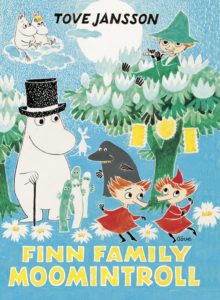
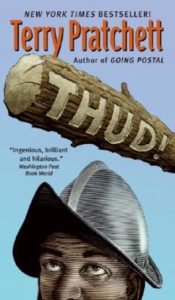
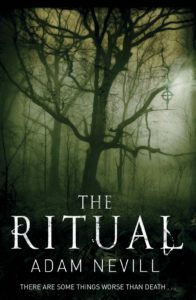

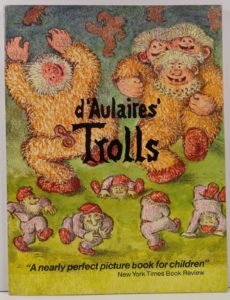
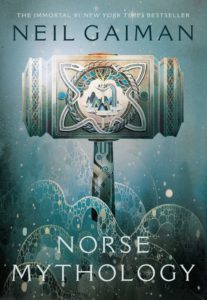
Huh, I’ve seen this movie advertised a dozen times and never had any interest, but this makes me want to watch it!
Oooh, my husband and I really liked this one. It feels like forever ago since we watched it!
[…] 7: Episode 7: Trolling for Dollars, featuring André Øvredal’s Trollhunter + The Norwegian Forest […]
[…] 7: Episode 7: Trolling for Dollars, featuring André Øvredal’s Trollhunter + The Norwegian Forest […]